#arXiv.org
Explore tagged Tumblr posts
Photo

i know twilight would have LOVED the first ever aperiodic monotile that was just discovered https://arxiv.org/abs/2303.10798
4K notes
·
View notes
Note
hi ash! what books/study resources do u recommend for someone who wants to get into astrophysics without having to take any classes?
hi :) i absolutely love that you’re interested in learning astrophysics! so cool. here are some books & resources to get you started —
books:
astrophysics for people in a hurry by neil degrasse tyson
cosmos by carl sagan
a brief history of time by stephen hawking
black holes and time warps: einstein’s outrageous legacy by kip s. thorne
the elegant universe by brian greene
an introduction to modern astrophysics by bradley w. carroll and dale ostlie
online courses:
PBS space time, minutephysics & scishow space for insightful videos.
NASA’s website is an invaluable resource for astrophysics students. super rich with articles, data and educational material. ArXiv.org is also a treasure trove of research papers in astrophysics.
happy stargazing ⭐
118 notes
·
View notes
Text
Why Nothing Sounds Quite Like LyreBird
Fans of RTVS may remember Joshua, beautiful baby boy of wayneradiotv. If you're like me, you might be wondering why Joshua stayed dead after LyreBird shut down. Why couldn't he be brought back with a different TTS? The fact is that LyreBird was a product of a very specific time in AI TTS. In March 2017, Google released a paper on Tacotron [1], one of the first AI TTS's with real success. In April 2017, LyreBird began showing off their TTS buisness [2]. As AI bros are wont to do they took that shit. LyreBird is a version of Tacotron. It incorporates technologies that would be published in the next few Tacotron papers [3] including multi-speaker, prosody encoding, and prosody prediction. And in February 2018, Tacotron 2 came out [4].
Tacotron 2 is better in every way. It's faster, better at imitation, and simpler. This makes it much more economical to run and fine-tune on a specific speaker, so every subsequent AI TTS is based off of Tacotron 2.
If you read the paper, Tacotron 1 has a lot of arbitrary and untested choices. It's clear that they published it in a hurry to prove that it could be done, but they hadn't refined it to cut the unnecessary fluff.
This brings me to why I'm writing this. I hope it's clear that I did a lot of research for this. That's because I did my best to recreate LyreBird, named LyingBard, and I've put it up for you to play with here.
You may notice though that it's not quite right. The main reason is that I had to go with a low quality version (reduction factor 5 for those who read the paper). A high quality version would take too long to train with my current set up and I'm almost certain that's what they used.
If I got about $100 in donations, I'm pretty sure I could get a high quality version trained in about a month. It still wouldn't sound exactly the same. Due to the chaotic nature of training a neural network, anything short of getting the actual files off LyreBird (now Descript's) servers won't make it sound exactly the same.
Regardless, LyingBard is here to stay. It's hosted on a free server so I have no reason to take it down. I'll be posting about updates here on this blog. I'm working towards getting custom voices ready at the moment and I've got some ideas for new features and fun toys for the future.
Thanks for reading!
Here's some sources if you wanna learn more about stuff I mentioned:
[1] https://arxiv.org/abs/1703.10135
[2] https://www.pcmag.com/news/lyrebird-can-listen-and-copy-any-voice-in-one-minute
[3] https://google.github.io/tacotron/
[4] https://arxiv.org/abs/1712.05884
267 notes
·
View notes
Text
How to have more things by forgetting how to count them
Karagila Asaf and Schlicht Philipp 2020 How to have more things by forgetting how to count them† Proc. R. Soc. A.http://doi.org/10.1098/rspa.2019.0782
Alternate version of the same paper on arxiv: https://arxiv.org/abs/1910.14480
160 notes
·
View notes
Text
HOW MANY DIMENSIONS EXIST??
Blog#347
Wednesday, November 8th, 2023
Welcome back,
The world as we know it has three dimensions of space—length, width and depth—and one dimension of time. But there’s the mind-bending possibility that many more dimensions exist out there. According to string theory, one of the leading physics model of the last half century, the universe operates with 10 dimensions.

But that raises a big question: If there are 10 dimensions, then why don’t we experience all of them or haven’t detected them? Lisa Grossman at ScienceNews reports that a new paper suggests an answer, showing that those dimensions are so tiny and so fleeting that we currently can’t detect them.
It’s difficult to completely explain the mathematics behind string theory without putting on a graduate seminar or two, but in essence dimensions five through ten have to do with possibility and include all possible futures and all possible pasts including realities with a totally different physics than those in our universe.
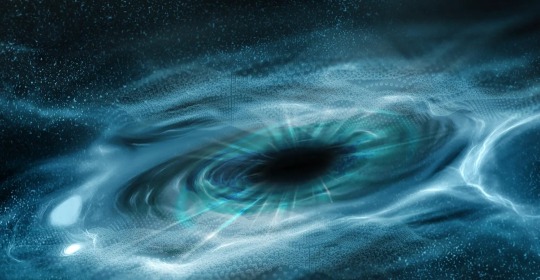
If two protons smash together at high enough speeds, they have the ability to create a tiny black hole that would exist for just a fraction of a second before disappearing, according to a new study, which hasn't been peer-reviewed, on the preprint server arXiv.org. The collision would open up a little bubble of interdimensional space where the laws of physics are different than ours, leading to an event known as vacuum decay. In quantum physics, vacuum decay implies that if the interdimensional space was large enough, we’d be toast.
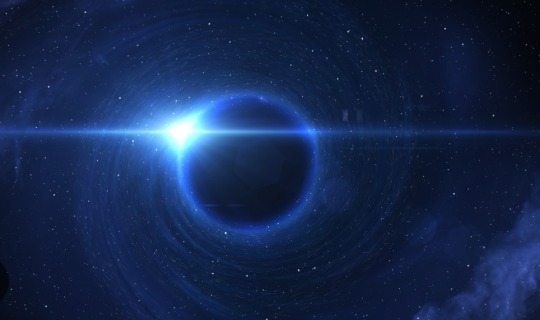
With enough gravity to interact with our world, the newly formed “Cosmic Death Bubble” would grow at the speed of light, rapidly change the physics of our universe, render it uninhabitable and effectively zap us out of existence.
“If you’re standing nearby when the bubble starts to expand, you don’t see it coming,” the study’s co-author, physicist Katie Mack of North Carolina State University, tells Grossman. “If it’s coming at you from below, your feet stop existing before your mind realizes that.”

Ultrahigh energy cosmic rays are bashing into each other all the time with enough energy to start this process. If extra dimensions were large enough to allow the death bubble to form, the researchers found, it would have happened thousands of times already. The fact that we still exist is one circumstantial piece of evidence that other dimensions are ultra-tiny. The team calculated that they must be smaller than 16 nanometers, too small for their gravity to influence much in our world and hundreds of times smaller than previous calculations, Grossman reports.
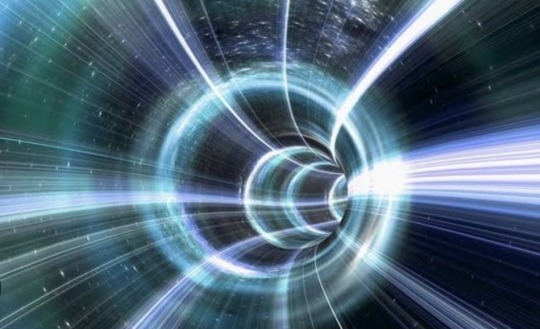
The new study comes on the tail of another study about extra dimensions published in the Journal of Cosmology and Astroparticle Physics published in July. Mara Johnson-Groh at LiveScience reports that one of the big questions in physics is why the expansion of the universe is accelerating. One theory is that gravity is leaking out of our universe into other dimensions. To test this idea, researchers looked at data from recently discovered gravitational waves.
our universe was leaking gravity through these other dimensions, the researchers reasoned, then the gravitational waves would be weaker than expected after traveling across the universe.

But the researchers found they didn’t lose any energy on their long journey, meaning other dimensions either don’t exist or are so tiny they don’t affect gravity very much, if at all.
“General relativity says gravity should be working in three dimensions, and [the results] show that that’s what we see,” physicist Kris Pardo of Princeton, lead author of the July study, tells Johnson-Groh. The latest study also concludes that the size of extra dimensions is so small that it precludes many theories about gravity leaking out of our universe.
Originally published on www.smithsonianmag.com
COMING UP!!
(Saturday, November 11th, 2023)
"WHAT IS THE FURTHEST THING WE CAN SEE IN SPACE??"
#astronomy#outer space#alternate universe#astrophysics#universe#spacecraft#white universe#space#parallel universe#astrophotography
154 notes
·
View notes
Text

DeepMind posted a paper on training simulated robots to play soccer (& translating that to the real world).
The part I liked best: they had to penalize the robots for falling down, or they would "learn to roll on the ground towards the ball to knock it into the goal, rather than walking and kicking." https://arxiv.org/abs/2304.13653
309 notes
·
View notes
Text
Way too many people view autistic trans girls as "nerdy lonely weird guys with she/her pronouns" and it really shows
There I said the quiet part out loud.
I personally noticed this pattern of treating trans women with inclination towards STEM as "lonely nerdy guys with she/her pronouns".
The article "Why The Trans Programmer" ,https://arxiv.org/pdf/2205.01553, tries to examine the prevalence of transfems in programming and in doing so it uses the phrase "trans women and AMABs". Now I know they don't mean it transphobically and the article is good, but I coldn't even read it because of how dysphoria inducing that was.
I myself literally only became more okay with identifying as autistic only after I dated cis women and went on expensive fancy vacation to Bali, so I would break stereotypes associated with my neurodivergence and transness.
I involuntarily repress all my stims and prepetitive behaviours not because of the ableism, but primarily because it reminds me that I'm trans and in turn it reminds me of my assigned sex at birth. Every time I twirl my hands I am like "oh shit, transness and autism are connected! so that's a reminder that I'm physically not the gender i identify as!" and it goes in a loop.
26 notes
·
View notes
Text
Dinkclump Linkdump
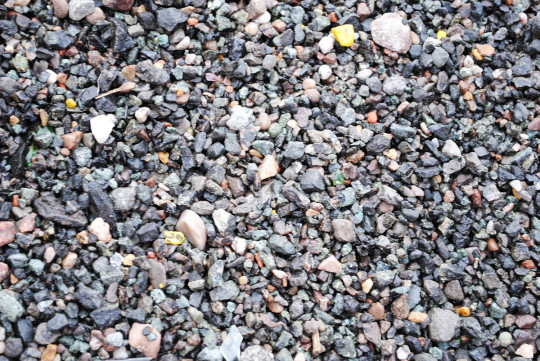
I'm on tour with my new novel The Bezzle! Catch me TONIGHT in LA (Saturday night, with Adam Conover), Seattle (Monday, with Neal Stephenson), then Portland, Phoenix and more!

Some Saturday mornings, I look at the week's blogging and realize I have a lot more links saved up than I managed to write about this week, and then I do a linkdump. There've been 14 of these, and this is number 15:
https://pluralistic.net/tag/linkdump/
Attentive readers will note that this isn't Saturday. You're right. But I'm on a book tour and every day is shatterday, because damn, it's grueling and I'm not the spry manchild who took Little Brother on the road in 2008 – I'm a 52 year old with two artificial hips. Hence: an out-of-cycle linkdump. Come see me on tour and marvel at my verticality!
https://pluralistic.net/2024/02/16/narrative-capitalism/#bezzle-tour
Best thing I read this week, hands down, was Ryan Broderick's Garbage Day piece, "AI search is a doomsday cult":
https://www.garbageday.email/p/ai-search-doomsday-cult
Broderick makes so many excellent points in this piece. First among them: AI search sucks, but that's OK, because no one is asking for AI search. This only got more true later in the week when everyone's favorite spicy autocomplete accidentally loaded the James Joyce module:
https://arstechnica.com/information-technology/2024/02/chatgpt-alarms-users-by-spitting-out-shakespearean-nonsense-and-rambling/
(As Matt Webb noted, Chatbots have slid rapidly from Star Trek (computers give you useful information in a timely fashion) to Douglas Adams (computers spout hostile, impenetrable nonsense at you):
https://interconnected.org/home/2024/02/21/adams
But beyond the unsuitability of AI for search results and beyond the public's yawning indifference to AI-infused search, Broderick makes a more important point: AI search is about summarizing web results so you don't have to click links and read the pages yourself.
If that's the future of the web, who the fuck is going to write those pages that the summarizer summarizes? What is the incentive, the business-model, the rational explanation for predicting a world in which millions of us go on writing web-pages, when the gatekeepers to the web have promised to rig the game so that no one will ever visit those pages, or read what we've written there, or even know it was us who wrote the underlying material the summarizer just summarized?
If we stop writing the web, AIs will have to summarize each other, forming an inhuman centipede of botshit-ingestion. This is bad news, because there's pretty solid mathematical evidence that training a bot on botshit makes it absolutely useless. Or, as the authors of the paper – including the eminent cryptographer Ross Anderson – put it, "using model-generated content in training causes irreversible defects":
https://arxiv.org/abs/2305.17493
This is the mathematical evidence for Jathan Sadowski's "Hapsburg AI," or, as the mathematicians call it, "The Curse of Recursion" (new band-name just dropped).

But if you really have your heart set on living in a ruined dystopia dominated by hostile artificial life-forms, have no fear. As Hamilton Nolan writes in "Radical Capital," a rogues gallery of worker-maiming corporations have asked a court to rule that the NLRB can't punish them for violating labor law:
https://www.hamiltonnolan.com/p/radical-capital
Trader Joe’s, Amazon, Starbucks and SpaceX have all made this argument to various courts. If they prevail, then there will be no one in charge of enforcing federal labor law. Yes, this will let these companies go on ruining their workers' lives, but more importantly, it will give carte blanche to every other employer in the land. At one end of this process is a boss who doesn't want to recognize a union – and at the other end are farmers dying of heat-stroke.
The right wing coalition that has put this demand before the court has all sorts of demands, from forced birth to (I kid you not), the end of recreational sex:
https://www.lawyersgunsmoneyblog.com/2024/02/getting-rid-of-birth-control-is-a-key-gop-agenda-item-for-the-second-trump-term
That coalition is backed by ultra-rich monopolists who want wreck the nation that their rank-and-file useful idiots want to wreck your body. These are the monopoly cheerleaders who gave us the abomination that is the Pharmacy Benefit Manager – a useless intermediary that gets to screw patients and pharmacists – and then let PBMs consolidate and merge with pharmacy monopolists.
One such inbred colossus is Change Healthcare, a giant PBM that is, in turn, a mere tendril of United Healthcare, which merged the company with Optum. The resulting system – held together with spit and wishful thinking – has access to the health records of a third of Americans and processes 15 billion prescriptions per day.
Or rather, it did process that amount – until the all-your-eggs-in-one-badly-maintained basket strategy failed on Wednesday, and Change's systems went down due to an unspecified "cybersecurity incident." In the short term, this meant that tens of millions of Americans who tried to refill their prescriptions were told to either pay cash or come back later (if you don't die first). That was the first shoe dropping. The second shoe is the medical records of a third of the country.
Don't worry, I'm sure those records are fine. After all, nothing says security like "merging several disparate legacy IT systems together while simultaneously laying off half your IT staff as surplus to requirements and an impediment to extracting a special dividend for the private equity owners who are, of course, widely recognized as the world's greatest information security practitioners."
Look, not everything is terrible. Some computers are actually getting better. Framework's user-serviceable, super-rugged, easy-to-repair, powerful laptops are the most exciting computers I've ever owned – or broken:
https://pluralistic.net/2022/11/13/graceful-failure/#frame
Now you can get one for $500!
https://frame.work/blog/first-framework-laptop-16-shipments-and-a-499-framework
And the next generation is turning our surprisingly well, despite all our worst efforts. My kid – now 16! – and I just launched our latest joint project, "The Sushi Chronicles," a small website recording our idiosyncratic scores for nearly every sushi restaurant in Burbank, Glendale, Studio City and North Hollywood:
https://sushichronicles.org/
This is the record of two years' worth of Daughter-Daddy sushi nights that started as a way to get my picky eater to try new things and has turned into the highlight of my week. If you're in the area and looking for a nice piece of fish, give it a spin (also, we belatedly realized that we've never reviewed our favorite place, Kuru Kuru in the CVS Plaza on North Hollywood Way – we'll be rectifying that soon).
And yes, we have a lavishly corrupt Supreme Court, but at least now everyone knows it. Glenn Haumann's even set up a Gofundme to raise money to bribe Clarence Thomas (now deleted, alas):
https://www.gofundme.com/f/pzhj4q-the-clarence-thomas-signing-bonus-fund-give-now
The funds are intended as a "signing bonus" in the event that Thomas takes up John Oliver on his offer of a $2.4m luxury RV and $1m/year for life if he'll resign from the court:
https://www.youtube.com/watch?v=GE-VJrdHMug
This is truly one of Oliver's greatest bits, showcasing his mastery over the increasingly vital art of turning abstruse technical issues into entertainment that negates the performative complexity used by today's greatest villains to hide their misdeeds behind a Shield of Boringness (h/t Dana Clare).
The Bezzle is my contribution to turning abstruse scams into a high-impact technothriller that pierces that Shield of Boringness. The key to this is to master exposition, ignoring the (vastly overrated) rule that one must "show, not tell." Good exposition is hard to do, but when it works, it's amazing (as anyone who's read Neal Stephenson's 1,600-word explanation of how to eat Cap'n Crunch cereal in Cryptonomicon can attest). I wrote about this for Mary Robinette Kowal's "My Favorite Bit" this week:
https://maryrobinettekowal.com/journal/my-favorite-bit/my-favorite-bit-cory-doctorow-talks-about-the-bezzle/
Of course, an undisputed master of this form is Adam Conover, whose Adam Ruins Everything show helped invent it. Adam is joining me on stage in LA tomorrow night at Vroman's at 5:30PM, to host me in a book-tour event for my novel The Bezzle:
https://www.vromansbookstore.com/Cory-Doctorow-discusses-The-Bezzle

If you'd like an essay-formatted version of this post to read or share, here's a link to it on pluralistic.net, my surveillance-free, ad-free, tracker-free blog:
https://pluralistic.net/2024/02/23/gazeteer/#out-of-cycle

Image: Peter Craven (modified) https://commons.wikimedia.org/wiki/File:Aggregate_output_%287637833962%29.jpg
CC BY 2.0 https://creativecommons.org/licenses/by/2.0/deed.en
#pluralistic#the bezzle#ryan broderick#mary robinette kowal#exposition#john oliver#margot robbie#adam conover#ai#ai search#change healthcare#centralization#pharma#pbms#pharmacy benefit managers#corruption#scotus#crowdfunding#clarence thomas
38 notes
·
View notes
Text



English paper pieced Aperiodic Monotile wall hanging is complete!
This block is based on the Smith, Myers, Kaplan, and Goodman-Strauss's aperiodic monotile known as the "hat" (explainer here https://amp.cnn.com/cnn/2023/04/06/world/the-hat-einstein-shape-tile-discovery-scn/index.html and the original publication https://arxiv.org/abs/2303.10798 )
In order to make this I broke the shape down to its most basic form - the 30-60-90 triangle. I drafted my own triangles on cardstock and glue basted the fabric to the forms.
From there I built up the shapes in shades of grey with a pop of orange. I wanted colors that both hid the complexity of the blocks and revealed it upon closer inspection. Ultimately I want the viewer to find new details as they look closer and longer at the peice.
Midway through making blocks I came to the realization (probably missed when I read the articles) that some of the shapes are mirrored in the tiling. I had already made my orange block but I elected to partially disassemble it and make that my central mirrored shape.
Initially I had no plan for how many blocks I would make. I essentially madr blocks until I was bored of making them. Because of the somewhat fluid nature of all the seams assembly of the blocks together was far simpler than I expected. I could fold in essentially any direction without creasing the triangles. I used a diagram from the Smith et al paper as my guide to assembly.
Once I had it all together it was time to quilt. Honestly the quilting pattern I chose was something of an impulse but initial tests were nothing short of delightful. While my local store carries only a few colors thicker hand thread I was able to find a soft grey that stood out on every fabric in this quilt, but didn't have such a harsh contrast that you can't look past the stitching. My design are simply 3" squares that overlap in the corners and were measured on the fly. Their irregularities are accidental but still a feature.
Finally I came to binding. I realized I had 42 corners to get around. I used a 1" bias strip to bias face the peice, folding out the seam allowances on the outer edge to secure the binding by hand. The only machine work on this quilt is in the seams connecting the binding strips. In hindsight I should have cut my binding strips at 1.25" but I managed to get it all turned and stitched down. This was most certainly the most challenging part of the entire peice.
And now it hangs on my bare office wall, enticing me to stare at more than just a blank space.
#quilting#english paper piecing#hand pieced#epp#hand sewing#hand quilting#aperiodic monotile#einstein tile
45 notes
·
View notes
Text
Moon Missions
What’s going on with the moon?
The United States recently had a solar eclipse on April 8th, 2024, and some might be surprised to learn that the moon is, in fact, affected by solar radiation. The charged particles emitted by the sun, called the solar wind, reach the moon with no interruption from its atmosphere, as it has none. It also has no global magnetic field, another layer of protection that Earth does have, in comparison.
The moon does, however, have small areas of magnetic fields. We can see this because these areas remain lighter in photos whereas chemical reactions from radiation darken the unprotected areas.
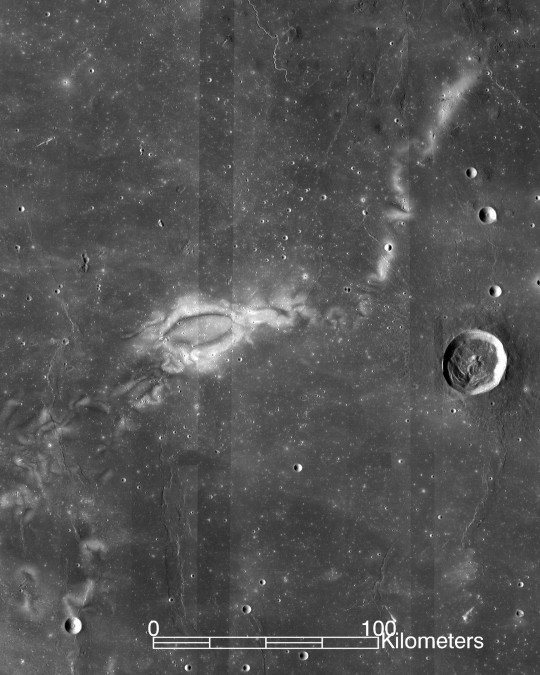
Fortunately, most of these charged particles cannot pass through the hulls of space stations, so astronauts are safe in orbit. Cosmic rays, made of stronger and faster-moving particles, are more dangerous. Even on Earth, under the atmosphere and magnetosphere, cosmic radiation reaches humans, though not enough to be considered damaging to our health.
A lander and rover launched in 2018 delivered the first measurements of radiation levels on the moon 4. Based on those data, astronauts on the moon can be exposed to up to 150 times higher radiation levels than on Earth.
Radiation is a leading reason for the pause in lunar landing missions. It raises risks of cataracts, heart diseases, radiation illness, cancer, and other ailments. Longer missions, of course, would heavily exacerbate these radiation doses.
Other Health Concerns
Cosmic rays contain High-Energy (HZE) ions. In different exposure such as from nuclear accidents or irradiation therapy, HZE ions have been found to cause dysregulation in the mitochondria and damage to DNA. Because of this, prolonged exposure is linked to health effects often associated with aging, such as hippocampus synapse loss and metabolic disruption caused by damage to mitochondrial DNA.
Long-duration space flights have also been linked to cardiovascular disorders. For astronauts on the Apollo missions, heart attack was “the second leading cause of death” 8. For additional space flights outside of Earth’s magnetosphere, astronauts also had a higher mortality rate due to cardiovascular diseases.
In a previous article, we discussed the relationship between circadian rhythms and health. These rhythms are another thing that space travel can impact, causing sleep and mental health disturbances in astronauts 9.
While various studies are investigating the conditions of these health risks, a current NASA mission is specifically investigating radiation protection.
Long-term Mission
NASA plans on eventually returning to human-manned missions to the moon.
First, they have to address the issues discussed above.
In November of 2022, Artemis I launched with two manikins bearing radiation detectors. From this mission, NASA was able to confirm the success of the intended trajectory, launch of ground systems, and the Orion spacecraft. The radiation results from this mission are still being analyzed.
The Artemis missions are intended to explore more of the moon than ever before, and lay groundwork for eventual missions to Mars.
Artemis II will not launch any earlier than September of 2025. It is planned to last ten days, consist of a 4-person crew, and be a lunar flyby to ensure the proper functioning of the spacecraft’s systems.
It has seemed for years that lunar exploration has halted. Manned missions have indeed been paused, for good reasons. Ensuring the safety of astronauts is a priority, and they face serious health risks even when missions go as expected. But NASA intends to continue exploring space, the moon, and Mars. The current Artemis missions are discovering improved, new ways to ensure the safety of astronauts while making scientific progress.
Additional Resources
1. https://science.nasa.gov/moon/solar-wind/
2. https://phys.org/news/2012-01-solar-flares-astronauts.html
3. https://arxiv.org/ftp/arxiv/papers/1211/1211.3962.pdf
4. https://link.springer.com/article/10.1007/s11214-020-00725-3
5.https://www.nasa.gov/missions/artemis/orion/orion-passengers-on-artemis-i-to-test-radiation-vest-for-deep-space-missions/
6.https://www.smithsonianmag.com/science-nature/how-space-radiation-threatens-lunar-exploration-180981415/
7.https://www.nasa.gov/humans-in-space/analysis-confirms-successful-artemis-i-moon-mission-reviews-continue-2/
8.https://www.frontiersin.org/journals/physiology/articles/10.3389/fphys.2020.00955/full
9. https://www.ncbi.nlm.nih.gov/pmc/articles/PMC9818606/
#radiation#moon#moon mission#nasa#nasa photos#article#research#solar wind#solar radiation#cosmic rays#cosmic radiation#space exploration#science#space#Work has been horribly busy so the next article might not be out on the usual schedule
19 notes
·
View notes
Text
AI chatbots can be tricked by hackers into stealing your data

Source: https://www.bitdefender.com/en-us/blog/hotforsecurity/ai-chatbots-can-be-tricked-by-hackers-into-stealing-your-data/
Paper: https://arxiv.org/abs/2410.14923
6 notes
·
View notes
Text
Biological 'wiring'
Throwing this out here for inspiration. Emergency repairs in the fields? Get some slime-wires to tide you over until you get back to base and can get some nice new metal wires soldered in.
(Slime mould already has applications in engineering etc. because it tends to find the most energy-efficient routes between points. Want to plan a railway network? You could do worse than put out some little piles of oats representing the station locations, then wait and see how the slime mould bridges them!)
6 notes
·
View notes
Note
can i just say... i was desperate to see someone in academia do something like this because all the talk i see in studies seem very disconnected from the actual discussions/concerns online, so thank you very much! looking forward to seeing what comes out of this.
P.S. i'd also be curious to see if the responses from a non-fandom crowd are different, and exactly where they differ.
hi! There's actually several academics working on these issues at the moment (I've connected with some other folks in the social sciences who are working on similar questions at the moment; in fact, another phd student in psychology is recruiting a broader range of queer artists for an interview study on GenAI right now, so go check that out if you like!).
There's also been some studies coming out of other fields too re: how people respond to works of art made by AI and by humans:
This report in Nature last year and this study from 2019 both come to mind off the top of my head, though I'm sure there's been some more recent work that's come out in the few months I haven't kept a close eye on it (AI art has been a thing well before Midjourney exploded, so folks have been studying this from even before that)
neither of these are in a fandom context but the work's definitely of interest to academia for sure.
update: forgot about this preprint released in january re: artists' attitudes towards AI https://arxiv.org/abs/2401.15497
11 notes
·
View notes
Photo

https://arxiv.org/pdf/2304.13712v2.pdf
67 notes
·
View notes
Text

the diffraction pattern!! :D

" BSE-SEM image of a thin polished slice of the “khatyrkite” sample, with different minerals marked as follows: k = khatyrkite, (CuAl2); c = cupalite (CuAl); u = unknown mineral with composition AlCuFe; i = icosahedrite. " (Bindi et al, 2011, figure 1)
so that's a scanning electron microscope image of the khatyrkite (a mineral) sample (which is macroscopic) that the icosahedrite (microscopic amounts in that sample) was found naturally occuring in!! key part is that it was naturally occuring, quasicrystalline patterns were already studied by with math and physics interest :D like discovery of quasicrystals as physical things got a nobel prize, and then this was them as Naturally Occuring physical things
you can definitely get them human made in other ways too. the more,, interesting ways are with for example the trinity bomb test 'glass'/trinitite (had the same type of pattern~, icosahedral, as the one in the images i attached), or with architecture decorations!! (see/search for girih :D) (there's way more articles and examples for any part of this, i'm only linking a few. also i'm not knowledgeable about quasi-crystals/-patterns i am just learning today)
icosahedrite and its diffraction pattern is so cool!!
#there's evevn more interesting stuff about reciprocal spaces in relation to this. the quasicrystalline patterns & tiling#and about the amount of indices you need to describe things which is a concept i love#i look forward to learning about that stuff in upper div classes#i like making art with similar radial and size-variant compositions of circles as the diffraction pattern here#so seeing this was made even better#(mine are usually about suns or supernovas)#aperiodic monotile enthusiasts is this interesting as well?#“einstein hat” is one name for the aperiodic monotile#strictly chiral aperiodic monotiles: named spectres#https://arxiv.org/abs/2305.17743 for the spectres#there's a post about it that says you can add words too which is hilarious i'll reblog that next i think
5 notes
·
View notes
